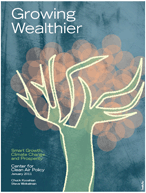CEPAL
Documento de Proyecto
Marco Castro
Abril 2010
En los últimos años, Centroamérica ha avanzado con más celeridad en el proceso de integración regional y se han dado importantes pasos en el proceso de modernización aduanera. No obstante, aún existen algunos limitantes para facilitar el intercambio comercial. En este contexto la realidad que enfrentan las pequeñas medianas empresas que se involucran en el comercio internacional dista mucho de la realidad que enfrentan las grandes empresas.
El presente estudio identifica las limitantes más importantes que afectan el comercio intrarregional y específicamente las relacionadas con los trámites de aduana y la logística de exportación con el objetivo de generar propuestas de mejorar, a partir de la adopción de buenas prácticas, que permitan agilizar el comercio regional en beneficio particularmente de las empresas más pequeñas.
El estudio se desarrolló en dos fases, la primera consistió en la investigación y diagnóstico y la segunda en la propuesta de mejoramiento. La metodología utilizada implicó la investigación en fuentes primarias y secundarias.
Como parte de la recopilación de información se realizaron un conjunto de entrevistas calificadas a representantes de asociaciones y gremiales, empresarios y funcionarios de instituciones públicas y privadas de cada uno de los países y como resultado se pudieron establecer el orden de prioridad, según la percepción de los entrevistados, los problemas en los procesos de logística y aduanas en Centroamérica, así como algunas recomendaciones para atenderlas.
Destacan dentro del conjunto de problemas identificados, los tiempos e inspecciones para obtener permisos especiales, la limitada institucionalidad de apoyo, problemas de capacitación del personal de aduanas, procedimientos y sistemas excesivos y deficiencias en infraestructura. Como parte de las acciones de mejora se hace énfasis implementación de sistemas de transmisión electrónica y la revisión de procedimientos para la simplificación de trámites y se indican recomendaciones para fortalecer la institucionalidad de apoyo a las Mipymes.
Sin duda este documento, que es el resultado de un esfuerzo conjunto de CENPROMYPE, CEPAL y DESCA/GTZ, será un insumo más que contribuirá a los esfuerzos que se realizan en toda la región para agiliza el comercio y permitirá abonar a la discusión y búsqueda de soluciones reales que permitan consolidar aún más el proceso de la Integración Regional.
Ingrid Figueroa
CENPROMYPE
Bajar documento

































